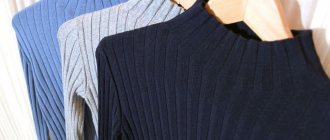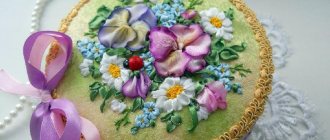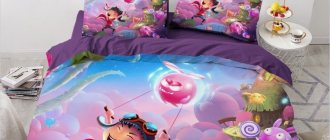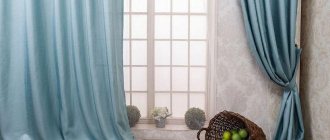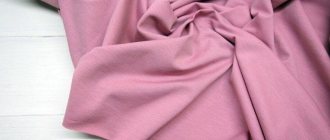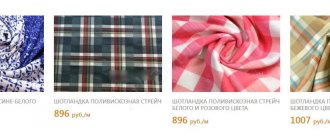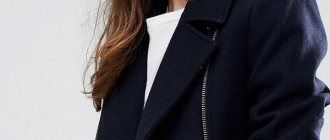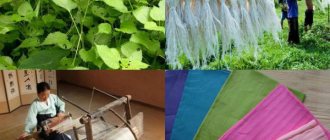Fabric of fabrics, precious, finest, pure and light - fine linen has been honored with all sorts of epithets at all times. It is mentioned more than 40 times in biblical writings alone, and many times in historical sources. Visson is a fabric for the clothes of the elect, a symbol of royalty, moral purity and righteousness. There is even a version that the legendary Golden Fleece is not sheep’s skin at all, but this material born from the sea. Scientists from different countries argue about its composition and cannot agree on this issue.
A little history
The earliest mentions of fine linen can be found in the Old Testament (the period from the 13th to the 5th centuries BC). There you can also find words about specific workshops involved in its manufacture. For example, 1 Chronicles 4:21, 22 speaks of the Jewish house of Ashbei, which was famous for this skill. According to the Holy Scriptures, clothing was made from visson for senior church officials and senior rulers.
In the Middle Ages, fine linen was produced by craftsmen in Mediterranean countries and, to a lesser extent, in India. Its ancient samples had amazing indicators: for 1 inch of fabric there were 152 warp threads and 77 weft threads; it was a high-quality, thin to translucent fabric with a high density. By the way, modern linen analogs have 88 weft threads, which is the maximum that modern industrial production is capable of.
What is it made from?
As we have already mentioned, there is no consensus on what is the starting material for creating fine linen fabric, reviews of which are even in the Bible. There are two versions in total:
- Byssus (consonant with fine linen), the protein threads of the pinna nobilis mollusk, with which it is secured to the stones. Hence the second name of the fabric: sea silk.
- Linen. In English - "byssus", comes from βύσσος (ancient Greek), which, in turn, originates from the Semitic "butz", meaning "fine flax" (Syriac). In modern Greek “bussos” means linen, linen.
The following speaks in favor of the “linen” version: in the Bible, in parallel with “butz”, another term is used, “shesh”, which also means “fine flax”, but made in Egypt. That is, there is repeated reference specifically to flax.
On the other hand, according to Pliny the Elder, this material was valued on a par with gold. Only rulers had the right to wear clothes made from it: pharaohs, patricians, emperors. And Herodotus mentions - and it is confirmed by Egyptologists - that fine linen, a fabric, a photo of which can be found on our page, was also used for bandages of Egyptian mummies. From this we can conclude that we are not talking about linen, even skillfully crafted. On our website we have tips for housewives and you can read which mode to wash tulle correctly.
Visson: what kind of fabric is it?
Fine linen in English "Byssus" means "fine linen". Whether this name is related to the composition of the canvas or whether it appeared by chance is not known for sure. There are still controversial debates about its origin. Visson - what is it? It’s not difficult to imagine, although today you won’t see the canvas in its original form.
Sample of fine linen fabric
For your information! There are many fabrics similar to fine linen: boufmuslin, cambric, muslin, etc. They are decorated with beads and beads, and various embroidery. This fabric is excellent for sewing wedding dresses, tablecloths and curtains.
Initially, fine linen was produced in white and golden colors. Many believe that it was made from flax, which was well bleached. The uniqueness of the fabric was that the threads were very thin, but incredibly dense, and the fabric itself was almost transparent. The production of fine linen was mainly carried out in the East and the Mediterranean.
Mediterranean
Scientists have discovered remains of this fabric in the tombs of the pharaohs and are convinced that ancient Egyptian weavers and spinners owned an unusual technique. Ancient masters created a canvas, 1 m² of which included 152 warp threads and 77 weft threads. Modern weavers weave a material that consists of 88 threads. The creation of such a unique fabric required enormous labor, because clothes made from this fabric were worn by pharaohs and high priests.
Note! Herodotus, when describing the embalming process, indicated that “the body was wrapped from head to toe in fine linen bandages.”
Pharaoh mummy
The color of purple was also found, so many researchers believe that it was made from raw silk, which was dyed in the required color. As a result of such manipulations, the canvas became like porphyry.
You might be interested in: Using hemp fabric for clothing
There is a third version, which claims that these threads are of natural origin. They were collected from mollusks that are attached to stones with their threads called byssus. With the help of such hairs, Pinna nobilis mollusks are held in place during the ebb and flow of the tides. They are found in the Mediterranean Sea. Now the mollusks are endangered.
Mollusk with byssal threads
The Phoenicians were the first to learn how to process byssus, and they managed to develop a unique technology for making a very thin, but at the same time durable fabric. These masters spread their knowledge throughout the Mediterranean.
For your information! Fine linen was often mentioned in the Bible and the Jewish holy letter, where it was said that fine woven linen was used to sew the curtain that covered the entrance to the tabernacle.
More information about the “marine” version
The production of fabrics from the protein threads of pina nobilis actually existed. Byssus, after special processing, turns into golden brown yarn. The finest, weightless, almost transparent fabrics were woven from it and used for the production of clothing. We say “woven” because today the industrial production of this material is impossible due to the sharp decline in the population of this mollusk. At the moment we are talking only about fine linen yarn and embroidery from it. The technology for creating such yarn is known only to masters called “maestro”.
There is another argument in favor of the option with clam threads. In many cases, when we talk about fine linen, we are not talking about white material, but about golden, and “blue, purple and scarlet” (Bible, Ex. 26:1) fabric. Here we can talk about byssus yarn, in its natural color and dyed using traditional methods for that time and place.
These methods, by the way, were mentioned by Jules Verne in his work “Twenty Thousand Leagues Under the Sea”: his heroes wore clothes, the fabric for which was made, literally, “from the byssus of certain bivalve mollusks.” There are also words about coloring the material “following the example of the ancients”: with ink liquids of aplysia (purple tint) and purpurnitsa (shades of purple).
True, one point is puzzling: jackets among the clothes that go with fine linen, underwear and shirts are plausible, but not warm clothes. We can fantasize and imagine that the author has sea silk on a denser heavy Pikachu. You can learn more about the qualities of Pikachu from the article on our website.
What was the fine linen like?
Despite the fact that fine linen is repeatedly mentioned in numerous literary and historical sources, researchers have not yet come to a conclusion from what raw materials and in what way it was obtained. The most likely are three versions:
- Ancient fine linen was made from the finest linen and possibly cotton threads. When studying the burials of the pharaohs, whose mummies, according to ancient Egyptian records, were wrapped in this material, it was found that one square inch of linen contains 152 warp threads and 77 weft threads. For comparison, the thinnest linen fabrics produced on modern machines contain 88 weft threads. Of course, when made by hand, such fabric was highly valued and was the property of kings, clergy of the highest rank, and very wealthy people . It was used to make decorations for palaces and temples, and especially revered ritual accessories. The main colors were white and gold, and the material itself was almost transparent. Ancient Roman historians left mentions of purple fine linen, which was worth its weight in gold and was the favorite fabric of Roman patricians.
- According to some sources, fine linen was made from silk threads that were delivered from China through India. When it comes to medieval fabrics, this version is very reliable, since silk with this name was produced in the south of France in the 17th - 19th centuries (as mentioned in the novels of Jules Verne). The general name for different types of textiles is due to the fact that in antiquity and the Middle Ages, priority was paid not to the raw materials from which the fabric was made, but to its quality and texture.
- Visson threads were obtained from the Mediterranean pinna. This bivalve mollusk is attached to the surface with the help of a leg. There is a gland on the leg that secretes protein compounds called byssus. When hardened, the byssus forms a bundle of strong and thin fibers with a silky structure that hold the mollusk on a support.
The length of this bundle reaches 6 cm, and the total amount of byssus produced by one mollusk does not exceed 2 grams. Thus, to obtain a fabric large enough, it is necessary to collect more than a thousand mollusks. However, this was the method used to make the legendary gloves, which were placed in a nut shell.
Modern fine linen
Today you cannot find on sale the material that is called and is fine linen. There are only analogues, the finest linen veils and fabrics made from other raw materials, which claim to be close in quality to the original. Main similarity criteria:
- High density with minimal thickness.
- High aesthetic qualities.
- Wear resistance.
- Low elasticity. Visson - knitwear never existed.
For example, gas is an interesting material; we have already written about it and we advise you to read this article. This also includes many types of silk and synthetic “fine linen” fabrics, curtains, clothes, bedding, etc. Accordingly, we cannot give any recommendations for care: it will depend on the type of fabric chosen.
From modern materials, read about oxford fabric - the properties of which repel dirt.
What is twisted linen and porphyry?
In the Bible, the word “fine linen,” in particular “twisted linen,” is mentioned many times. The concept of “twisted linen” meant that the linen was of double strength. The tabernacle, a camp temple, was made from woven linen and blue, purple and scarlet wool. There were four layers of coverings protecting the tabernacle. The first layer consisted of ten curtains made of woven linen, which coincided with God's ten commandments. All the numbers of God's structure are associated with the veils. We can conclude that fine linen is a sacred material. Find out what microsatin fabric looks like at this link.
Robes for high priests and royalty were sewn from twisted linen. Porphyra is a royal regalia that represents a symbol of power. It is a robe in the form of a long purple cape. On bright holidays and at feasts, royalty and rich people “dressed in purple and fine linen.”
How much does the fabric cost?
Material made according to all canons from the byssus pina nobilis cannot be bought today, either in Russia or in any other country. As stated above, there are not even factories where this fabric is produced. So where can you find fine linen, has it really disappeared? It is believed that there is only one left in the whole world, the last keeper of the art of creating sea silk. This is seamstress CHIARA VIGO (Chiara Vigo), a resident of San Antiojo (Sardinia). Her creations do not go on sale, since according to the philosophy of the maestro, fine linen is a gift, and not a way to make a profit.
If we talk about analogues, the cost can vary greatly, depending on the quality of the material, country of production, and purpose. So, linen veils will cost from 380 to 1000 rubles, if you don’t buy luxury stores; prices for cupra fabrics start from 550 rubles, and the upper limit is 2000 rubles; natural silk will cost from 2500 rubles and, as they say, “to the skies”; Linen fabrics have a huge range, from 120 rubles to several thousand per meter. You can continue endlessly. We have a detailed article about material for underwear, we think you will like it.
This is interesting: modern manufacturers of fabrics and underwear, if they want to indicate the exclusivity of their products, use the word “fine linen” in its name or the name of a company or store.
Our site is constantly updated with interesting information. To keep track of new articles, just add it to your bookmarks! Read additionally on how to clean a silicone phone case, there are the author's tips.
Modern fabric production
Today there is no large production scale of fine linen fabric. There are several reasons for this:
- The Mediterranean Sea has become very dirty, so shellfish strings are unusable;
- production is a long and labor-intensive process;
- Fine linen was replaced by similar synthetic materials, one of which is Chinese soft silk.
Chinese silk
However, despite these troubles, Carjara Vigo lives on the island of Sardinia, who owns a secret technology for making linen from mollusk threads. The craftswoman does not sell her paintings, because she believes that the hobby is a gift from the saints and one cannot get rich from it. Examples of large paintings can be seen in the largest museums in the world.
Note! It was Carjara Vigo, a simple woman without special education, who was invited to a council of scientists in Italy, where they discussed the issue of the authenticity of the image of Jesus Christ on a fine linen scarf. According to the biblical account, Matron Veronica gave Christ a handkerchief to wipe his face with while ascending to Golgotha. The imprint of Christ's face remained on the fabric. Vigo had to understand the manufacturing technology and composition of the fine linen in order to establish the authenticity of the fabric.
Comparison project between the Shroud of Turin and the Sudrium of Christ from Manopello
Sea silk is used to create unique thin gloves. They can easily fit in a nutshell. About 2 g of threads come out of one mollusk. To weave a large cloth, you will need about 1000 clams.
You might be interested in Description of mouton fur: properties and characteristics of sheepskin fur
Visson for wide use is made from ordinary polyester with the addition of cotton and silk. This fabric is also transparent and is mainly white and beige in color. It is used for sewing curtains.
"Sea Gold"
Visson, reviews from the Internet
Anfisa Petrovna: “I’ve never seen fine linen live, but I once watched a film on YouTube about a woman who makes it. To be honest, I don’t understand what’s wrong with it to warrant paying that kind of money. Yes, very beautiful, especially these colors, gold, purple and violet, but nothing more. Although this may be the opinion of a person living in a time when machines are quite advanced.”
Svetlana: “Once I bought natural silk, it was called fine linen. Thin, very beautiful and delicate. I was very pleased. It was only later, when I started googling the name, it became clear that what I bought had nothing in common with real fine linen. But this analogue turned out to be not so bad, I will say, it was not for nothing that they called it that. By the way, underwear with that name came up in the search. Nothing special."
Katya: “The veils that are sold under the name “Visson” are my weakness. The finest, made of linen, a real decoration. But they are capricious in care, that is, that is. And once they gave me a silk scarf, it also said “fine linen”. I really liked it too. But expensive..."
There's even more history in the video, everyone watch it!

